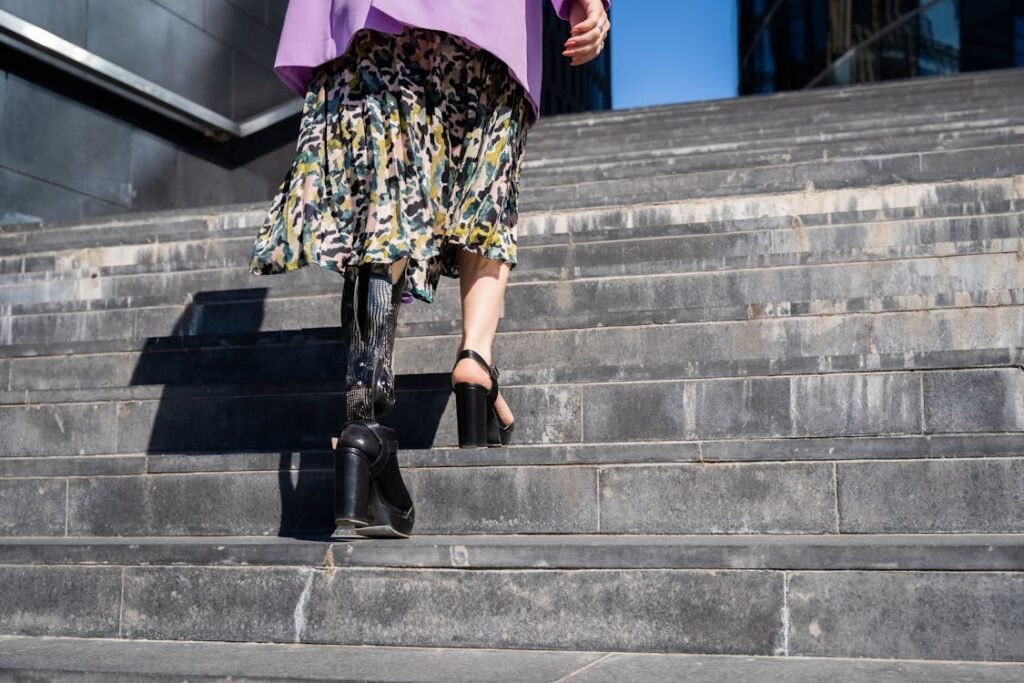Learning to walk again after an amputation is a journey that goes far beyond just wearing a prosthetic. It takes time, practice, and the right kind of training. This process is called gait training, and it is not the same for every person. The type of amputation you have plays a big role in how your body moves, how your weight shifts, and how your muscles respond. For people with partial foot amputations, the challenges are very different from those faced by someone with a hemipelvectomy, which is one of the most complex types of amputations.
At Robobionics, we meet many individuals on different points of this path. Some have lost just a part of their foot, while others are living with the loss of an entire leg and part of the pelvis. We work closely with them to help build a walking style that feels natural, safe, and comfortable. Gait training is not about copying how others walk—it’s about finding what works for your body.
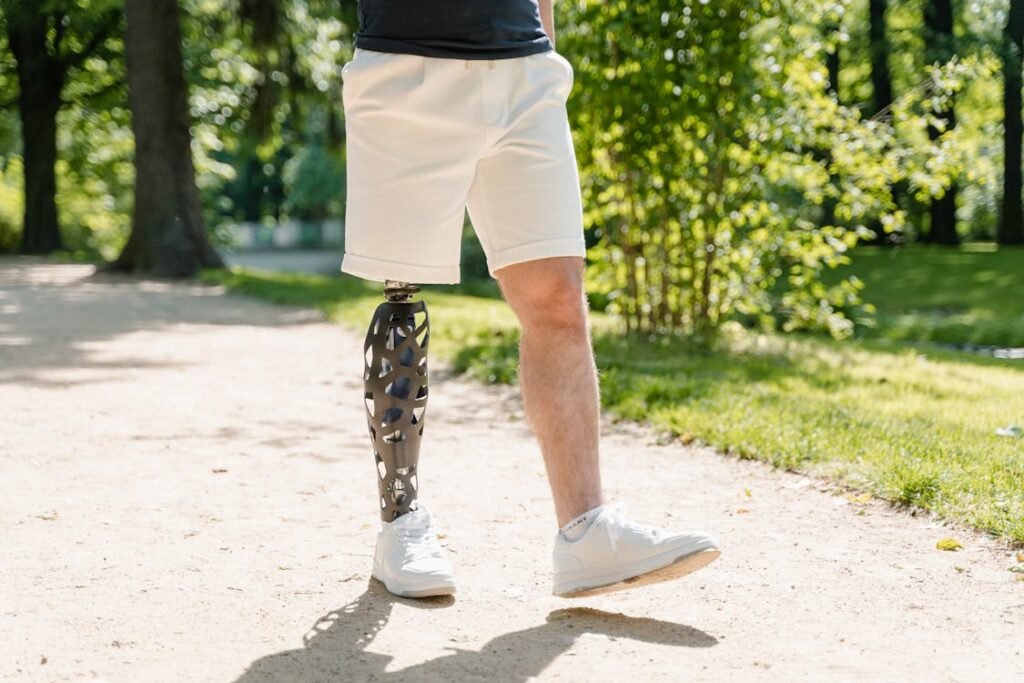
Understanding Partial Foot Amputation and Its Impact on Walking
Partial foot amputation happens when a part of the foot is removed. This can include just a toe, the front part of the foot, or even the whole midfoot. It might seem like a small change, but the foot plays a big role in how we walk. It helps us balance, push off the ground, and stay stable.
Even a small part of the foot being removed can cause major changes in how the rest of the body moves.
How Gait Changes After Partial Foot Amputation
After a partial foot amputation, the most noticeable change is the loss of the push-off phase during walking. Normally, we push off with our toes and the ball of the foot, which helps move the body forward smoothly.
When this part of the foot is gone, it becomes harder to take that final step, so the body starts to overcompensate. Many people begin to lift their legs higher or use their hips more, which can cause extra strain on other joints over time.
Another issue is balance. Toes help us feel the ground and adjust quickly if we start to fall. Without them, it becomes harder to react, especially on uneven ground or when turning. This can make someone feel unsure or even fearful while walking.
Partial foot prosthetics are designed to fill in the missing part of the foot and help restore a natural walking motion. At Robobionics, we design lightweight, ergonomic foot solutions that blend comfort and function. But wearing a prosthetic is just the beginning—the real change comes with training.
The Focus of Gait Training for Partial Foot Amputees
Gait training for someone with a partial foot amputation focuses heavily on foot placement, balance, and regaining that push-off motion. Physical therapists often work on helping the person relearn how to roll through their foot from heel to toe, even if the toe is no longer there.
They use special exercises that improve strength in the ankle and calf, which are key muscles in walking.
Therapists also focus on walking evenly. It’s common to favor the uninjured side, which can cause an uneven walk or limp. Over time, this can lead to pain in the back, knees, or hips. Gait training helps fix these patterns early, making walking feel more natural again.
In many cases, we also introduce gamified home-based rehabilitation, which helps our users stay consistent with their practice in a fun and easy way. These are especially helpful for building confidence while walking indoors before heading outside.
If you’re thinking about starting prosthetic use, book a free demo of our solutions at Robobionics and see how easy mobility can be.
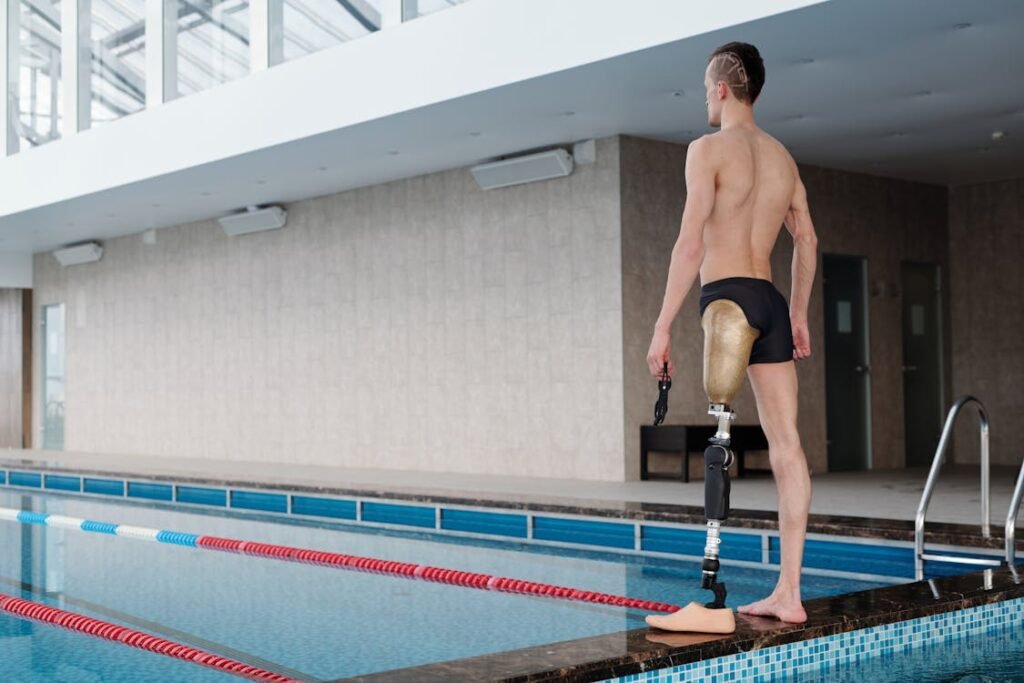
What Happens in a Hemipelvectomy Amputation
A hemipelvectomy is one of the most complex forms of amputation. It involves the removal of an entire leg along with a part or all of the pelvic bone on one side. This type of amputation changes the body’s structure completely.
There’s no remaining thigh, knee, or hip joint on the affected side. That means walking becomes a full-body activity that depends on the arms, back, and the remaining leg far more than in other cases.
Because the body’s center of gravity shifts so dramatically, the person has to learn to balance in a whole new way. It’s not just about learning to walk again—it’s about learning to move the entire body differently. Every step requires more effort, and every movement needs to be carefully practiced.
At Robobionics, we’ve seen firsthand how life-changing a good prosthetic and the right kind of training can be for hemipelvectomy amputees. These are not just technical solutions—they’re emotional turning points. We help individuals build strength, learn new walking strategies, and most of all, rediscover their independence.
How Gait Training Works After Hemipelvectomy
Gait training after a hemipelvectomy is very different from partial foot cases. The person is now using a full-body prosthetic setup that might include a custom-made hip socket, artificial thigh, knee, and foot. These are connected to support the full side of the body that is missing.
Since the pelvis plays a major role in walking, its loss means the artificial limb has to take on that role. Gait training here focuses first on balance while standing.
Before a person can walk, they must learn to shift their body weight over their remaining hip and spine without falling. This stage often takes patience, but it’s crucial.
Once balance is more stable, the focus shifts to controlled movement. Most prosthetic systems for hemipelvectomy patients use a swing-through gait. That means the person swings their prosthetic leg forward while using crutches or a walker for support.
The motion can feel awkward at first, but with practice, it becomes more fluid. The trick is to build rhythm and reduce how much energy each step uses.
Therapists also work a lot on core and upper body strength. Unlike partial foot amputees, who mainly work on lower body movement, hemipelvectomy patients rely heavily on their arms and shoulders for support. Training includes strengthening those muscles, improving posture, and learning how to walk longer distances without fatigue.
The psychological side of this journey is just as important. Gait training for hemipelvectomy patients can be challenging, especially in the early stages. That’s why our team at Robobionics includes not just technical experts, but compassionate care providers who support you at every step—emotionally and physically.
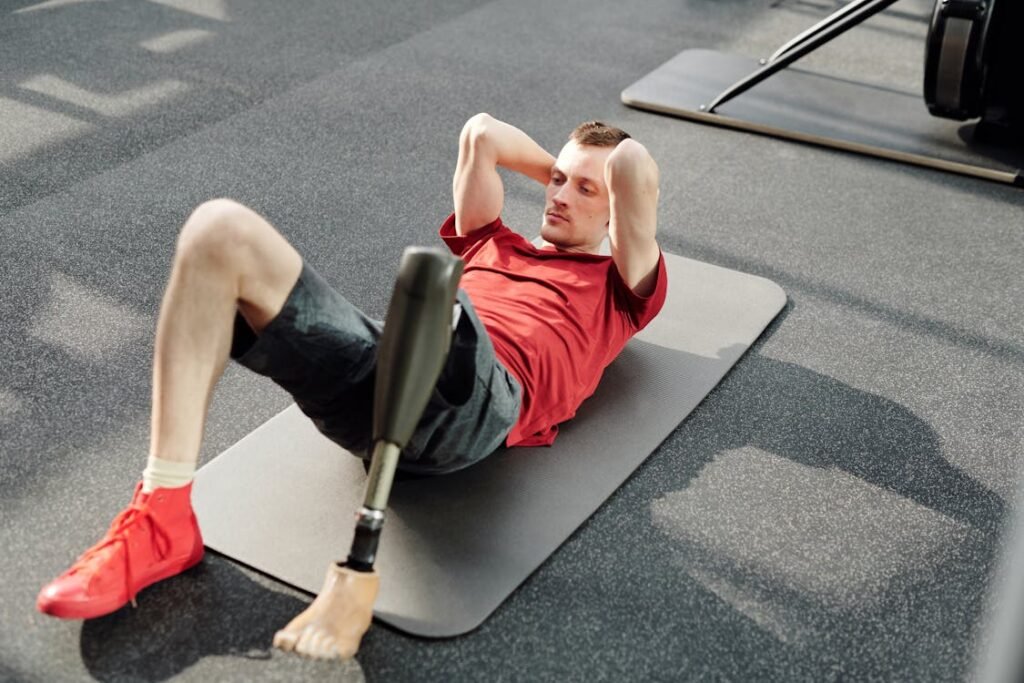
Key Differences in Gait Training Between Partial Foot and Hemipelvectomy Amputees
Though both types of amputations affect walking, the training involved is quite different in both intensity and approach. Understanding these differences helps set realistic goals and gives both patients and caregivers a clearer path forward. Gait training isn’t just about movement—it’s about confidence, safety, and long-term health.
Weight Distribution and Balance Needs
With partial foot amputees, the core of gait training focuses on fine-tuning balance and pressure distribution in the foot. These users still have their ankle and heel, so training revolves around helping them make better use of what’s left.
The goal is to teach the body how to roll the foot naturally, even if the toes are no longer present. Balance is mostly a matter of retraining foot movement and improving ankle control.
For hemipelvectomy patients, however, balance is a full-body challenge. There’s no leg or hip joint on one side, so the body has to learn a whole new way to stay upright. Instead of adjusting the foot, training focuses on the spine, upper body, and remaining leg.
Every step becomes an act of careful balance, and the person has to rely on their arms and assistive devices like crutches or walkers during the early stages.
That’s why our prosthetic services at Robobionics are always custom-built. Each prosthetic system is designed with the individual’s body structure and movement style in mind. This allows us to give better support for balance while keeping the prosthetic as light and ergonomic as possible.
Energy Use and Muscle Engagement
Another major difference in gait training is how much energy each movement requires. People with partial foot amputations often use slightly more energy than usual because they’re missing the natural push-off at the end of each step.
But overall, the energy cost of walking isn’t dramatically higher once they’ve adapted.
In contrast, hemipelvectomy amputees use a lot more energy for every step. Without a hip or leg to power movement, they depend on their arms, shoulders, and back to swing the prosthetic forward. This type of movement takes more effort and causes faster fatigue, especially in the early stages of training.
Our gamified home-based rehab programs at Robobionics help users practice in short, engaging sessions. Instead of long and tiring sessions, our approach uses bite-sized training that gradually builds strength and stamina. It’s a big help, especially for users recovering from high-level amputations.
Walking Speed and Step Style
Partial foot amputees can often return to a near-normal walking speed once they’ve adjusted. Their steps might be a bit shorter, but with the right prosthetic insert and training, they can usually walk smoothly without much limping.
For hemipelvectomy users, walking is slower by nature. The prosthetic leg has no active muscles, so every step takes a bit more time and effort. The swing-through gait also creates a unique walking rhythm. Instead of the smooth roll of a normal step, it’s more of a lift and swing motion, supported by upper body momentum.
Helping users build a comfortable and safe walking style is our top priority. During the gait training process, our therapists watch closely for signs of overcompensation or awkward posture. The earlier these habits are corrected, the easier it is to build long-term mobility and avoid injuries.
Interested in trying gait training with personalized care? Book a demo session at one of our Robobionics partner clinics like Omnify Prosthetics. We’ll walk you through what to expect and how our solutions can help you move forward—literally.
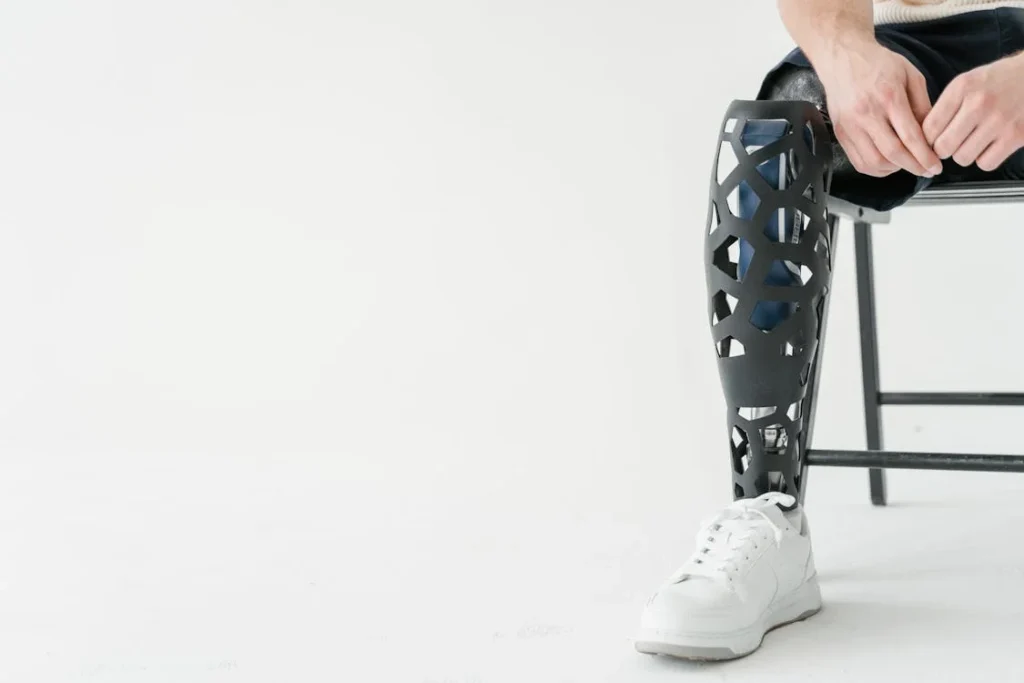
Role of Prosthetics in Gait Training: Custom Solutions for Different Needs
The type of prosthetic device used plays a massive role in how successful gait training can be. It’s not just about filling the physical gap left by an amputation—it’s about helping the body move better, stay balanced, and feel stable with every step.
At Robobionics, we design prosthetics not only for function but also for comfort, ease of use, and adaptability. This is especially important when you consider how different the needs are between partial foot and hemipelvectomy amputees.
Prosthetics for Partial Foot Amputees
For partial foot users, the prosthetic often looks simple but has a big job. It replaces the missing toes or forefoot and supports the natural roll of the foot while walking. This helps restore the push-off and improves the user’s ability to walk evenly.
The insert must be thin and light so it fits inside a shoe without causing discomfort. Many times, these devices are made with soft yet strong materials that blend with the skin and move naturally with the rest of the foot.
A key feature of a well-made partial foot prosthetic is energy return. It stores a little bit of energy when the foot hits the ground and releases it during push-off. This small detail can make a big difference in how walking feels.
At Robobionics, we use advanced 3D printing to create precise, comfortable fits that support both function and daily comfort. Since every foot is unique, every prosthetic we make is tailored to match that shape. Our goal is to make sure users can walk longer, stand easier, and move without worry.
If you’re currently managing a partial foot amputation, don’t settle for off-the-shelf solutions. Book a free demo with Robobionics to experience how a personalized prosthetic can transform your gait and your daily routine.
Prosthetics for Hemipelvectomy Amputees
Hemipelvectomy prosthetics are much more complex. They involve a full-body support system, often with a custom pelvic socket, artificial thigh, mechanical knee, and foot—all connected to mimic the shape and function of the missing side.
But unlike natural limbs, these systems have no muscles. That’s why they depend on careful design, correct alignment, and strong upper body control.
The pelvic socket is the foundation of this system. It holds the body upright and connects the artificial leg to the torso. If it doesn’t fit properly, it can cause discomfort, pain, or even lead to falls. That’s why getting the right shape, padding, and alignment is so important.
We also consider the suspension system—how the prosthetic stays attached to the body. For hemipelvectomy users, this must be strong enough to handle full-body weight but still allow for easy movement. Our prosthetic experts work closely with each user to make sure it’s secure without feeling tight or heavy.
Walking with this kind of setup takes a lot of effort. That’s why our gait training includes steps to gradually increase walking time and distance.
We help users learn where to place their weight, how to swing the leg safely, and how to keep the body upright without leaning too much. This protects the spine and prevents long-term strain.
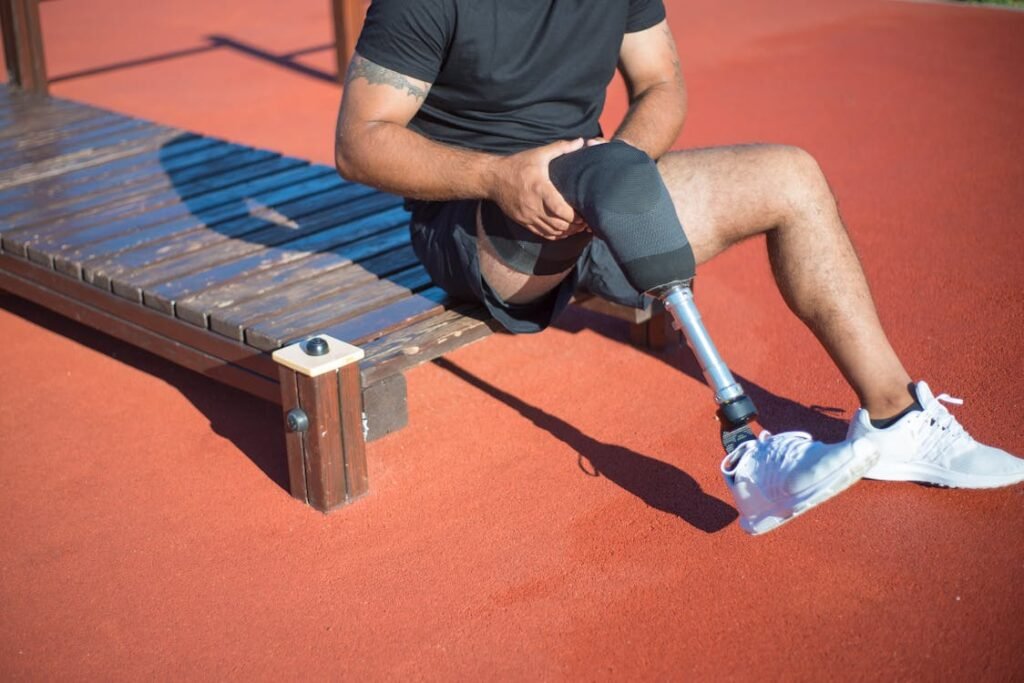
Emotional and Psychological Support in Gait Training
Beyond the physical steps of learning to walk again, there’s an equally important side to gait training that often goes unseen: the emotional journey. For both partial foot and hemipelvectomy amputees, the process of adapting to a new way of walking can bring up a wide range of emotions.
Frustration, fear, self-consciousness, and even moments of grief are common—and valid. Recognizing and addressing these feelings is a crucial part of rehabilitation that can deeply influence the success of gait training.
At Robobionics, we believe recovery is not just about mobility. It’s about restoring independence, confidence, and dignity. Each person has a unique story, and our role is to support that story with empathy and understanding as much as with technology and training.
Psychological Impact of Partial Foot Amputation
For someone with a partial foot amputation, the outward appearance might not change as drastically, especially when wearing shoes. But the internal experience can still be overwhelming. Many users feel off-balance, not just physically but emotionally.
They might doubt their ability to move safely or feel frustrated by the need to adjust something as basic as walking.
This is especially true when the changes are subtle but constant—things like avoiding uneven ground, adjusting shoes, or needing to rest more frequently. These everyday reminders can wear down a person’s self-esteem over time.
That’s why our rehab process includes not just physical guidance but emotional check-ins, giving users space to express their worries and wins.
We’ve also found that gamified home rehab can offer small, daily moments of achievement. These digital exercises help users see progress in real-time, which builds motivation and makes training feel less clinical and more rewarding. It’s not just exercise—it’s encouragement.
The Emotional Weight of Hemipelvectomy Recovery
In hemipelvectomy cases, the emotional hurdles are often deeper. The body goes through a major transformation, and with it, identity can shift too. Some users feel disconnected from their own body or uncertain about how others will perceive them.
Others are overwhelmed by the idea of walking with a complex prosthetic or being dependent on support tools like crutches in public.
We’ve worked with individuals who initially believed walking again might not be possible at all. They felt stuck, scared, or simply tired of trying. But through step-by-step gait training, combined with emotional support, we’ve helped them rebuild belief in what’s possible.
The smallest steps forward often create the biggest emotional breakthroughs.
Confidence is built, not assumed. That’s why we pair every fitting and training session with a human-centered approach. We take time to listen. We celebrate the first successful step just as much as we do the first independent walk outdoors.
That kind of support changes the way people view rehabilitation—from a burden into a personal victory.
If you’re navigating the emotional side of prosthetic use, you’re not alone. Connect with our care team to learn how Robobionics goes beyond hardware to support the heart of every journey. We’ll walk with you—through every high, every low, and every step that follows.
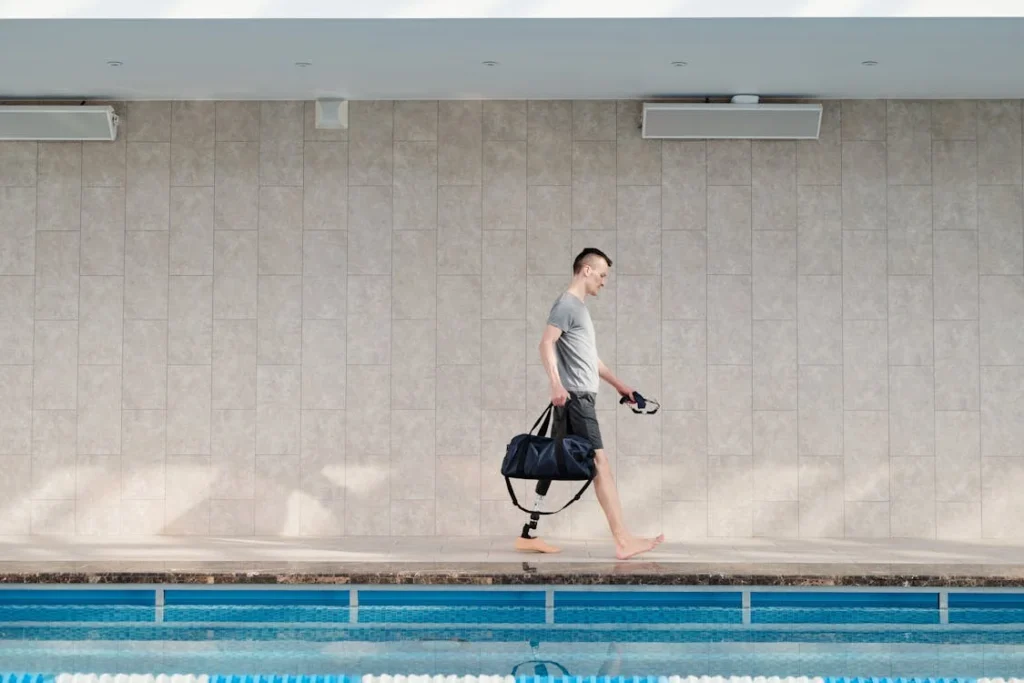
Long-Term Adaptation and Lifestyle Integration After Gait Training
Learning how to walk again is only the beginning. The real success of gait training comes much later—when walking becomes natural, movement feels automatic, and daily life no longer feels limited by the prosthetic.
For both partial foot and hemipelvectomy amputees, the goal is long-term adaptation, where the prosthetic becomes part of their everyday rhythm and not something they have to think about constantly.
At Robobionics, we often say that true rehabilitation isn’t complete when you take your first steps—it’s complete when you forget you’re even counting them.
Returning to Daily Activities
For partial foot amputees, returning to everyday activities often happens quickly, especially with consistent gait training. People are able to stand for longer periods, climb stairs with more ease, and walk over uneven surfaces like gravel or grass without fear.
However, small lifestyle adjustments remain important. Choosing the right footwear, watching for pressure spots, and staying consistent with strengthening exercises help avoid setbacks like ulcers or joint strain.
We help users build habits that support their lifestyle—whether they’re returning to a job that involves long hours on their feet or enjoying more recreational activities like walking the dog, gardening, or even dancing. It’s all possible with the right preparation.
Hemipelvectomy users, on the other hand, take longer to reach the same level of comfort with daily activities, but it is achievable with the right plan and support. Initially, most need to rely on assistive devices.
But over time, many are able to manage indoor movement without them, and with enough upper body strength, some can even take short outdoor walks using their prosthetic alone.
The path might be longer, but we’ve seen incredible stories of return to independence. From commuting to work to even participating in adaptive sports, our clients constantly push the limits of what’s expected—and we’re honored to support that ambition.
Staying Mobile Over the Years
The body keeps changing, especially as time passes. Muscle tone can shift, weight can fluctuate, and joints might behave differently. For both types of amputees, this means that gait training isn’t a one-time event. It’s something that should be revisited regularly to keep movement efficient and safe.
Our users come back for regular check-ins, adjustments, and retraining sessions. Sometimes it’s a simple socket tweak. Other times, it’s a full gait review after a major life event like surgery, weight gain, or pregnancy. We welcome these moments—they are signs that life is moving forward.
This is also where the local advantage of Robobionics really matters. Unlike imported systems that require long waits for repair or replacements, our prosthetics are designed, built, and serviced right here in India. That means faster support, more affordable care, and no long gaps in mobility.
Conclusion
Gait training is not a one-size-fits-all journey. For partial foot and hemipelvectomy amputees, the goals may be similar—safe, confident movement—but the paths to get there are very different. From the structure of the body to the complexity of the prosthetic, each step must be carefully guided with the right tools, training, and emotional support.
At Robobionics, we understand these unique needs. Our team offers personalized prosthetics, gamified home-based rehab, and long-term care that empowers users to reclaim their independence at their own pace. Whether you’re adjusting to a subtle change or learning to walk with a full-limb prosthetic, we walk with you—every step, every milestone, every breakthrough.
If you’re ready to take your first step toward better mobility, book a free demo of Grippy™ or connect with our expert team. Let’s rebuild not just movement, but confidence and freedom—together.



